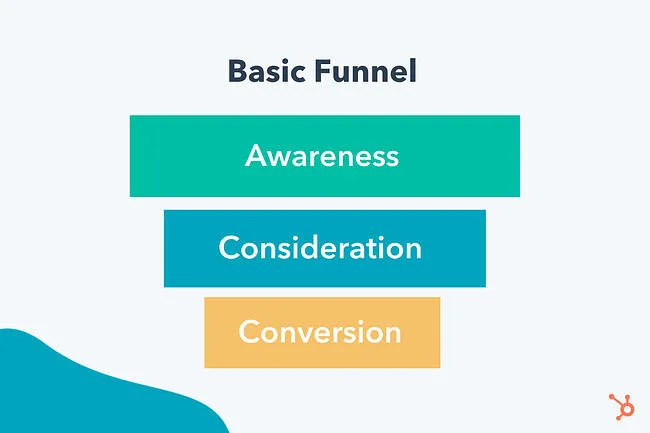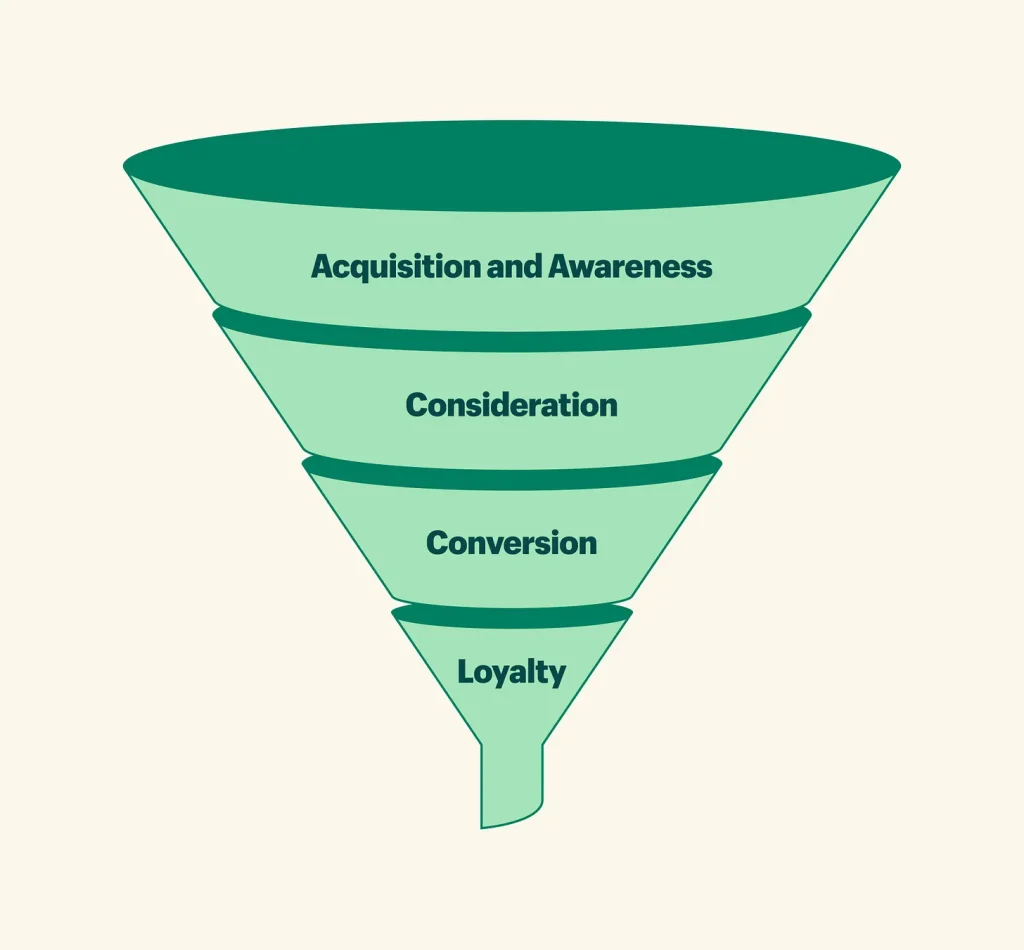Recently I’ve been thinking about and giving advice to a bunch of friends, colleagues and ex-colleagues who want to drive more sales.
Please don’t ask me how I got into this situation, but it seems coincidental that multiple people all asked me the same question in the same week.
The other commonality is they all want to sell more. Some want advice on how to run Ads to sell more, some want advice on how to sell more without having to spend money on Ads.
All of them do not have any awareness of the marketing funnel. So this is for them, and all the people who might find themselves in this situation in the future.
So what is it?
Think of a funnel, a wide open area at the top which narrows down to a small hole at the bottom.
In its simplest form (in relation to marketing and sales), the wide opening at the top is trying to suck people in and push them to the small hole at the bottom which is something like ‘selling a product’.
In more generic terms, the opening at the top is ‘awareness’ and the small hole at the bottom is ‘conversion’.
In reality, people don’t move from awareness straight to conversion, instead they pass through multiple states. Using a basic example from Hubspot we can see the addition of ‘consideration’.

So here, a whole bunch of people are aware of our products/brand, some might consider buying (not all, some), and not all of those who consider it will actually buy. So we have a lot of people at the top of the funnel and a few who actually go on and buy from us.
This funnel can be broken into multiple levels, and there are many different views (as shown in the image at the top taken from Shopify). You can find marketing funnels for all different industries/markets – have a look.
So what does this mean? And what advice have I given so far?
Example 1
In one instance, someone I know wants to buy adverts on Facebook/Instagram to sell in-person courses. The TLDR here is…
- They haven’t posted on social media for 4 months, and before that, they only had 3 posts.
- Their website isn’t set up to convert – their courses are split across multiple pages and there isn’t a ‘buy now’ option. Or a buy option of any kind.
In this example there is a couple of pieces of advice:
- Post more regularly on social media – this will grow ‘awareness’ organically
- additionally:
- when people land on their social media profiles – they expect to see it up to date with content
- it has to be relevant content too, not post after post saying ‘buy our courses’
- additionally:
- Modify the website to make conversions easily
- Currently, people would land on a page that has some info on a course, but they would have to look for the contact details and reach out to a person – which is not a streamlined process
- OR – instead of generating ‘sales’ generate ‘leads’ – make the landing page have an email capture form saying “enter your email address and we’ll be in touch with our up-to-date course information”
- admittedly this adds an extra barrier to conversion, but it also increases the likelihood of engagement from people at the consideration stage of the funnel
Once this is done, especially sorting the destination/website out, then buy Ads if they still need them.
Example 2
An online e-commerce company wants to know how to increase the number of people buying from its site.
But, and here’s the but… they are asking for sales – not asking for ‘awareness’ (not always a problem but in this case it is).
In fact, they have the whole funnel upside down. They drive traffic to their social media accounts from their e-commerce site – not the other way around. Crazy!
So some advice:
- Focus on building their social media presence (lots of separate advice on this)
- they have a unique style and operate in an interesting niche – people would be interested in their social media content – if they started publishing it
- be clear on the intention of the social media accounts – acknowledge they serve at the upper end of the marketing funnel (awareness/branding).
- Jab, jab, right hook – it’s a Gary Vee term (and book) – the jabs are posts that offer value to an end user, this could be information, amusement, entertainment, education, etc. The right hook – buy my product.
- really this should be – jab, jab, jab, jab, jab, jab, jab, jab, jab, jab, jab, right hook
- this company’s Facebook page is – right hook, right hook, right hook, repeated over and over – obviously with low engagement.
- Remove any barriers for the buyers – the website is great, the products are great but…
- One trivial thing – they don’t specify anything about shipping – it’s a US-based company – do they deliver to Ireland? how much? when? etc.
- This is a barrier for some and when I visited the store I wanted to buy something, I put it in my basket and went to the checkout -but I wasn’t confident they would deliver to Ireland so I quit…
- this is an abandoned purchase
- they got me to the final stage of purchasing and lost me – does that happen frequently? maybe, probably.
- interesting fact – 69.57% of online shopping carts are abandoned
Summary
So there you go, a quick summary with examples of the marketing funnel.
Key takeaways…
- At the top – Do things which bring people into the funnel – raise brand awareness and get people interested
- In the middle – Understand the marketing funnel relevant to you and your customers – then do things to try to maximise the number of people who pass through each layer (or minimise the number of people who leave the funnel)
- At the bottom – Make it easy for people to convert, after all, you’ve worked so hard to get them here – now help them convert!
